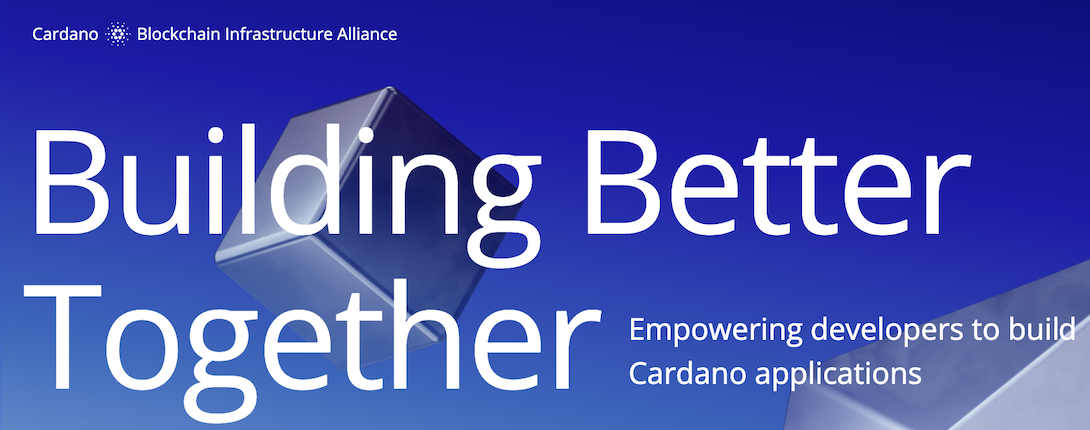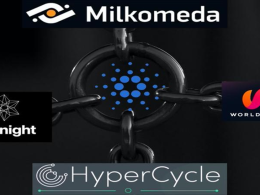Link to Proposal: https://cardano.ideascale.com/c/idea/105183
Proof of Reputation:
- Working Product or MVP: The CBIA team’s reputation within the Cardano ecosystem is evident through the notable contribution of the CBIA Members, all core contributors to Cardanos Infrastructure.
- Previous Proposals and Completions: Each and every CBIA team member has a history of successful project completions within the Cardano ecosystem, including the visualization of Cardano tooling interdependencies and organizing developer workshops. Their ongoing dApp Integration Toolkit initiative further showcases their commitment to addressing community needs.
Context:
- Category: Development & Infrastructure
- Funds requested: 47,750 ADA
1. Project Description:
The introduction of the project proposal provides an overall understanding of what the project is about.
Overview: The project aims to develop a system that provides comprehensive insights into the dependencies and compatibilities between various tools within the Cardano ecosystem. By gathering this data, the system will offer visual representations that allow users to understand and predict potential downstream impacts.
Purpose: The primary motivation behind this project is to address the challenges arising from a lack of clarity on dependencies between tools in the Cardano ecosystem. This obscurity often results in delays when implementing crucial updates and can lead to unexpected complications that are hard to manage. By providing a clear view of infrastructure components’ compatibility and interdependence, the project seeks to preemptively identify and mitigate potential issues, ensuring smoother updates and operations.
Background: The Cardano Foundation Developer Portal already offers a comprehensive list of Cardano infrastructure components, tools, and dApps. However, there’s a recognized need to enhance this list by detailing the compatibility and interdependencies between these components. This proposal stems from CBIA’s commitment to bolstering the Cardano developer ecosystem. Their initial discussions highlighted the importance of anticipating update challenges by improving visibility into the interrelations of infrastructure components.
Furthermore, while IOG’s Cardano node plays a pivotal role, it isn’t the sole source for all downstream updates. Alternative protocol client implementations, such as the Rust implementation [Tx.Pipe], the Go implementation [Blink Labs], and the upcoming TypeScript implementation [hLabs], signify a diversifying developer community contributing to Cardano. This diversity strengthens the network’s foundation. The proposed system will not only cater to these primary tools but will also offer insights into intermediate tools like data providers, further enhancing the ecosystem’s versatility.
2. Project Team:
An understanding of who is behind the project can shed light on their capability to execute it:
Team Members: The project is spearheaded by the CBIA internal workgroup, which comprises several key members with distinct roles:
- Santiago Carmuega – Founder, Tx.Pipe: LinkedIn Profile
- Chris Gianelloni – Founder, Blink Labs: GitHub Profile, LinkedIn Profile
- Matthias Benkort (Advisor) – Cardano infrastructure components and tooling insight: LinkedIn Profile
- Varderes Barsegian – Engineering Manager, Software Architect, Go Developer: LinkedIn Profile
- Bohdan Tsimbal – Senior Front-end Engineer, Maestro
- Pedro Lucas – Technical Business Analyst on DataViz, Developer Experience, Maestro: LinkedIn Profile
Skills and Expertise:
The team boasts a diverse range of skills and expertise:
- Varderes Barsegyan has a multifaceted background in physics, computer science, aerospace engineering, bioinformatics, and blockchain technology. As the Co-founder and CTO of Maestro, he is pioneering blockchain infrastructure for Cardano.
- Chris Gianelloni is an open-source advocate with a vast background in distributed systems and software release engineering. He has contributed to the Hadoop and Chef ecosystems and has multiple roles with Gentoo Linux.
- Pedro Lucas possesses over 20 years of experience in IT, specializing in Business Process Management and Decision support DataViz solutions in Finance and Banking. He has been deeply involved in the Cardano communities and technology for nearly two years.
- Bohdan is a seasoned front-end developer with expertise in web design and development. Although new to the crypto world, he is keen on delving deep into the Cardano Blockchain, facilitated by his association with the Maestro team.
Track Record:
CBIA is an amalgamation of several Infrastructure providers on Cardano, each with a rich history of building intricate solutions. This includes infrastructure tools and services, smart contract tooling, and complete SDKs for web3 development on Cardano. Some notable members include Tx.Pipe, Blink Labs, Maestro, Dandelion/Gimbalabs, Five Binaries, MeshJS, and HarmonicLabs.
Many of these members have created and maintain widely adopted tools, showcasing their deep understanding of how to document, articulate, and present data and information. Their close association with the Cardano Foundation, Emurgo, and IOG further solidifies their capability to deliver the project with high levels of trust and accountability.
3. Project Details:
In-depth information about the project and how it plans to address the issues at hand:
Methodology & Timeline:
The project is structured to span over an 8-month period, executed in four distinct stages:
- Augment Cardano Developer Portal with more metadata (3 months):
- Gather feedback from various stakeholders.
- Achieve consensus on the new schema of the json and include relevant documentation for tool authors.
- Implement changes to the Developer Portal web to support the new schema while ensuring backward compatibility.
- Engage tool authors to update their entries via PR submissions.
- Dependency Graph visualization (3 months):
- Research potential solutions (e.g., libraries) to convert dependency data into a visual representation.
- Implement the chosen solution.
- Engage with tooling and dApp authors to enrich the data.
- Trait matrix/table (1 month):
- Research potential solutions or produce code to present the data as a Trait matrix/table.
- Implement the chosen solution.
- Continue engaging with tooling and dApp authors to enrich the data.
Results sharing and broader feedback (1 month):
- Test, share for UAT, gather feedback, and make necessary adjustments.
- Produce/revise project debrief documentation.
- Promote the platform publicly, discuss, and gather ecosystem feedback.
- Analyze data to extract relevant information and engage in discussions about potential follow-up projects.
Resources:
All deliverables will be published by CBIA in the CF Dev Portal repository. These include:
- Participation and input from a significant number of tooling authors.
- Agreement and documentation on adopted data structures.
- Data update PR process documentation.
- Dataviz source code and documentation.
- Trait matrix table code and documentation.
- Community feedback documentation, access statistics, related PRs, and relevant information extracted from the data.
The primary output will be the dependency/compatibility insight permanently available in the CF portal. All code and supporting documentation will be open-sourced to encourage further development. Insights obtained from the system can be accessed and shared by anyone in the ecosystem.
Goals and Feasibility:
The project aims to:
- Establish a reference format and location for compatibility information among tooling authors and dependent projects. The CF Dev Portal’s central position makes this goal feasible.
- Enhance the Developer Portal’s value and utility to promote community-driven contribution and engagement. The feasibility of this goal is supported by the incentive for apps to use the latest components.
- Develop an intuitive dataviz for dependencies and traits exploration. CBIA’s experience and the availability of visualization tools make this goal achievable.
4. Impact Assessment:
Target Audience:
The primary beneficiaries of this project are tooling authors and dependent projects within the Cardano ecosystem. By establishing a reference format and location for compatibility information, these stakeholders can access crucial data to ensure smooth operations and updates. Additionally, the broader Cardano community, including developers, researchers, and enthusiasts, will benefit from the enhanced utility of the CF Dev Portal. Given the expansive nature of the Cardano ecosystem, the target audience is considerably large.
Measurable Outcomes:
The project has outlined clear deliverables and outputs for each milestone:
During the initial stage, the team aims to collaborate with a substantial number of tooling authors, reaching a consensus on data structures and establishing a clear process for data update PRs. In the second phase, they plan to release the source code for data visualization along with comprehensive documentation, setting the foundation for future enhancements. The third stage will introduce the trait matrix table code, complemented by detailed documentation to support subsequent expansions. Finally, in the fourth stage, will cover document community feedback, access metrics, and associated PRs. This will be coupled with insights drawn from the data and an intensified effort to engage the broader community in meaningful discussions.
The primary outcome is the permanent integration of dependency/compatibility insights into the CF portal. The success of this outcome can be measured by the frequency of its usage, the number of PRs related to it, and the feedback received from the community.
Sustainability:
The project is designed for long-term impact. By open-sourcing all code and support documentation, the project ensures that future developers can build upon and extend the initial work. This open-source approach fosters community-driven contributions and ensures that the platform remains up-to-date and relevant.
Furthermore, the insights obtained from the system can be continuously accessed and shared by anyone in the ecosystem, ensuring that the platform remains a valuable resource for the community. The project’s alignment with the CF Dev Portal, a central point for tool listings, further guarantees its sustained relevance and utility in the Cardano ecosystem.
5. Risk and Contingency Planning:
Every project faces potential risks and challenges. How are these addressed?
Risk Identification:
- Lack of Visibility: Without proper visibility of interdependencies between Cardano tooling, there’s a risk of mismanagement and lack of foresight of impacts.
- Update Challenges: Community members might face risks when updating their tools due to a lack of clarity on dependencies.
- Communication Barriers: Without a centralized system, there might be challenges in communication between tooling authors.
- Budget Constraints: The project relies on Catalyst funding, and any budgetary constraints or delays might impact the project’s timeline and deliverables.
Risk Mitigation:
- Enhanced Visibility: The project aims to provide clear visibility of interdependencies, allowing for better management and foresight of impacts.
- Reliable Updates: By understanding the interdependencies, developers and toolmakers can update their tools in a more reliable manner, leveraging the latest features from other tools.
- Centralized Communication: The project will facilitate ease of communication between tooling authors, ensuring that they are on the same page regarding updates and dependencies.
- Budget Justification: The budget requested from Catalyst is strictly for sponsoring the time and costs associated with validating the project. The team has ensured that the budget aligns with standard rates for professional services in Europe and the USA, ensuring value for money.
Contingency Plans:
- Community Engagement: If there are challenges in gathering data or feedback from tooling authors, the team can engage in more intensive community outreach and workshops to gather the required information.
- Alternative Funding: Should there be any budgetary constraints from Catalyst, the team can explore alternative funding sources or partnerships within the Cardano ecosystem to ensure the project’s continuity.
- Phased Implementation: If there are challenges in implementing all features at once, the team can prioritize the most critical features and implement them in phases, ensuring that the project continues to move forward.
6. Budget Estimation:
A breakdown of the project’s budget provides insight into its financial feasibility:
Detailed Budget:
The project has a clear breakdown of the estimated costs associated with each stage:
- Stage 1:
- Project management and interaction with stakeholders
- 50 hours at $50/hour = $2,500
- Data structures and Technical changes to Developer portal
- 40 hours at $55/hour = $2,200
- Project management and interaction with stakeholders
- Stage 2: Dependency Graph visualization research and implementation
- 100 hours at $55/hour = $5,500
- Stage 3: Trait matrix/table research and implementation
- 30 hours at $55/hour = $1,650
- Stage 4: Project management and interaction with ecosystem
- 45 hours at $55/hour = $2,475
The total estimated cost for the project is $14,325.
Given the current ADA rate of $0.30/ADA, this translates to a total of 47,750 ADA.
7. Q&A with Pedro Lucas
Q1: What methods do you intend to use to gather data on tool dependencies within the Cardano ecosystem?
A: The data will be updated and visualized on the Cardano Foundation developer portal, which serves as a primary resource for developers and stakeholders within the Cardano ecosystem. All the gathered data on tool dependencies will be directly updated on this portal, ensuring that the information is easily accessible to the community and remains centralized. The portal is already a well-recognized platform, making it the ideal location for these updates.
We will be working closely with the Cardano Foundation to ensure that the data is integrated seamlessly into the portal. By collaborating directly with the foundation, we can make sure that the updates align with the broader goals and standards of the Cardano ecosystem. Additionally, we will encourage tooling makers and developers to contribute by submitting their updates directly to the portal. This could be done through pull requests on the portal’s GitHub or other collaborative mechanisms, ensuring that the data remains current and comprehensive.
Once the data is gathered and structured, we will develop interactive visualizations that will be embedded directly into the Cardano Foundation developer portal. These visualizations will provide a clear and detailed view of tool dependencies, allowing users to explore and understand the relationships between different tools. The visualizations will be designed to be user-friendly, with features that allow users to click on specific tools to see their dependencies and get detailed information. As the Cardano ecosystem evolves and new tools are developed or updated, the visualizations will be regularly updated to reflect these changes, ensuring that the community always has access to the most current and accurate information.
To gather data on tool dependencies within the Cardano ecosystem, we’re implementing a multi-faceted approach:
- Enhancing Existing Metadata: We aim to enrich the existing data format on the Cardano Foundation developer portal. This involves adding detailed metadata about tool dependencies, protocol versions, and other relevant information.
- Collaboration with Cardano Foundation: Instead of creating a new tool, our focus is on enhancing the existing Cardano Foundation developer portal. This ensures that updates and information are centralized on a platform that’s already recognized and trusted by the community.
- Community Engagement: We’re actively reaching out to tooling makers and developers within the Cardano ecosystem. Our goal is to encourage them to update their metadata and share information about their tool’s dependencies. This collaborative approach ensures that the data we gather is comprehensive and accurate.
- Visualization Development: Once we’ve gathered substantial data, we’ll develop visualizations to represent tool dependencies hierarchically. This will allow users to explore and understand the intricate relationships between different tools within the ecosystem.
- Decision-Making Support: The ultimate goal is to streamline the decision-making process for developers and stakeholders. By providing clear insights into tool dependencies, we can help the community make informed decisions about development, updates, and integration.
Here are some images displaying the process and the outcome:
Q2:Can you explain the concept of the “Compatibility Matrix for Cardano” and its significance for this proposal?
A: Certainly! The “Compatibility Matrix for Cardano” is a conceptual framework that we’ve been actively discussing and refining within our team. Stemming from our internal discussions, notably with Santiago from TX pipe, the idea of this matrix emerged. The primary goal is to provide a more comprehensive and detailed visualization of the interdependencies between various tools and technologies within the Cardano ecosystem.
While many in the community are primarily focused on the Cardano node, we’ve recognized that the technological landscape is much more intricate. For instance, while some tools heavily rely on the Cardano node that IOG releases, others, like Maslow, incorporate elements from Blink Labs technology, making them less dependent on the Cardano node directly.
This matrix aims to shed light on these intricate relationships. It will detail which version of the protocol each tool requires, what other tools they depend on, and how changes in one tool might ripple through and impact others. For example, a change in the protocol version by IOG might first affect tools directly dependent on the Cardano node. Only later, when other tools like Goro Boros adapt to this new version, will it impact tools like Mastro, and subsequently, tools like Mesh.
The current visualization on the developer portal doesn’t provide this depth of understanding. Our proposal aims to enhance this by documenting the connections between apps, detailing their dependencies, and providing a more holistic view of the ecosystem. This will not only help developers but also provide clarity for those looking to understand the broader technological landscape of Cardano.
In essence, the significance of this proposal lies in its potential to offer a clearer, more detailed roadmap of the Cardano ecosystem’s technological interdependencies. This will facilitate better decision-making, anticipation of potential challenges, and a more streamlined development process across the board.
Q3: What strategies do you have in place to make the gathered information more user-friendly and accessible to the community?
A: Our strategy for making information user-friendly and accessible revolves around open collaboration and transparency. We prioritize open-source solutions, believing it’s vital for the ecosystem’s growth. By collaborating with key players like Mesh and Maestro, we aim to capture comprehensive data on tool dependencies and interconnections.
We’re also enhancing our website for better user navigation and have initiated community engagement through our YouTube channel, where we host meetings with partners like the Cardano Foundation. These sessions provide insights and foster collaboration. In essence, our approach combines technical detail with community engagement to ensure information is both comprehensive and easily digestible.
Q4: Please provide a detailed breakdown of how the requested funding will be allocated across different stages of the project.
In response to your question about the allocation of funding, our approach is rooted in collaboration and the shared goal of enhancing the Cardano ecosystem. Given the diverse entities and projects involved, it’s essential to clarify how we intend to manage our operations and distribute the funds.
Our day-to-day operations will be dynamic, reflecting the decentralized nature of our team. While each member has their primary projects, we’ve come together with a shared vision for this proposal. The funding isn’t just a financial incentive but a means to facilitate a project that benefits the entire community.
The budget we’ve requested isn’t meant to cover 100% of our professional time. Instead, it’s a support mechanism, allowing us to allocate a portion of our time to this collaborative effort without sidelining our individual projects. We believe that by dedicating ourselves to both our personal endeavors and this joint initiative, we can foster a more cohesive and productive ecosystem.
Breaking down the funding:
- Stakeholder Interaction and Data Gathering: A significant portion will be allocated to engaging with stakeholders, including the Cardano Foundation and other tooling makers. This phase involves defining the technical standard and collecting the necessary data.
- Development of Visualizations: The next chunk of the budget will be directed towards the technical side, specifically the creation of interactive visualizations. This involves leveraging various JavaScript and database libraries, which come with associated costs.
- Community Engagement and Feedback: As we progress, we’ll allocate funds for community engagement, ensuring that our outputs align with the needs and expectations of the Cardano community. This phase involves sharing our results, gathering feedback, and making necessary adjustments.
- Project Management and Ecosystem Interaction: The final portion of our budget will be dedicated to project management and further interactions with the ecosystem. This ensures that our outputs are effectively integrated and that we continue to foster collaboration and knowledge sharing.
In conclusion, our funding request is a reflection of our commitment to delivering value to the Cardano community. While this proposal represents an initial step, we envision it as the foundation for more extensive, automated processes in the future. Our goal is to ensure transparency, efficiency, and collaboration at every stage of this project.
Q5: How do you perceive the value of this project in relation to the broader contributions of the CBIA Team and its members?
A: “I would frame it as it facilitates the propagation of value in facilitating the propagation of updates in a controllable way in a controlled way”
For us at CBIA, this project represents a significant step forward in our ongoing contributions to the Cardano ecosystem. Given the team’s composition, which includes CEOs, CTOs, and other top-tier professionals, we believe we have an all-star lineup dedicated to this initiative. Coordinating such a high-caliber team does present its challenges, especially in terms of availability, but the potential impact and value of our collective effort make it a worthy investment. Through the various stages of this project, from stakeholder interactions to technical implementations and visualizations, we aim to provide a comprehensive solution that will greatly benefit the Cardano community. This isn’t just a one-off project for us; it’s a foundational step that paves the way for future expansions and enhancements to the Cardano portal. We envision this as the beginning of a journey toward a more automated and enriched portal in the future.
Q6: What happens if you won’t receive any funding?
A: Should we not secure the desired funding, it will indeed present a challenge. However, our commitment to the Cardano community and the vision we’ve set for this project remains steadfast. We might have to reevaluate our approach, potentially scaling back certain elements or exploring alternative funding avenues. The core essence of our project, which is to enhance the Cardano portal’s user experience and provide valuable insights, will always be our primary focus. While the funding would undoubtedly expedite our efforts, our passion and dedication to the Cardano ecosystem will drive us to persevere and find ways to bring our vision to fruition, even if it means adjusting our initial plans.










